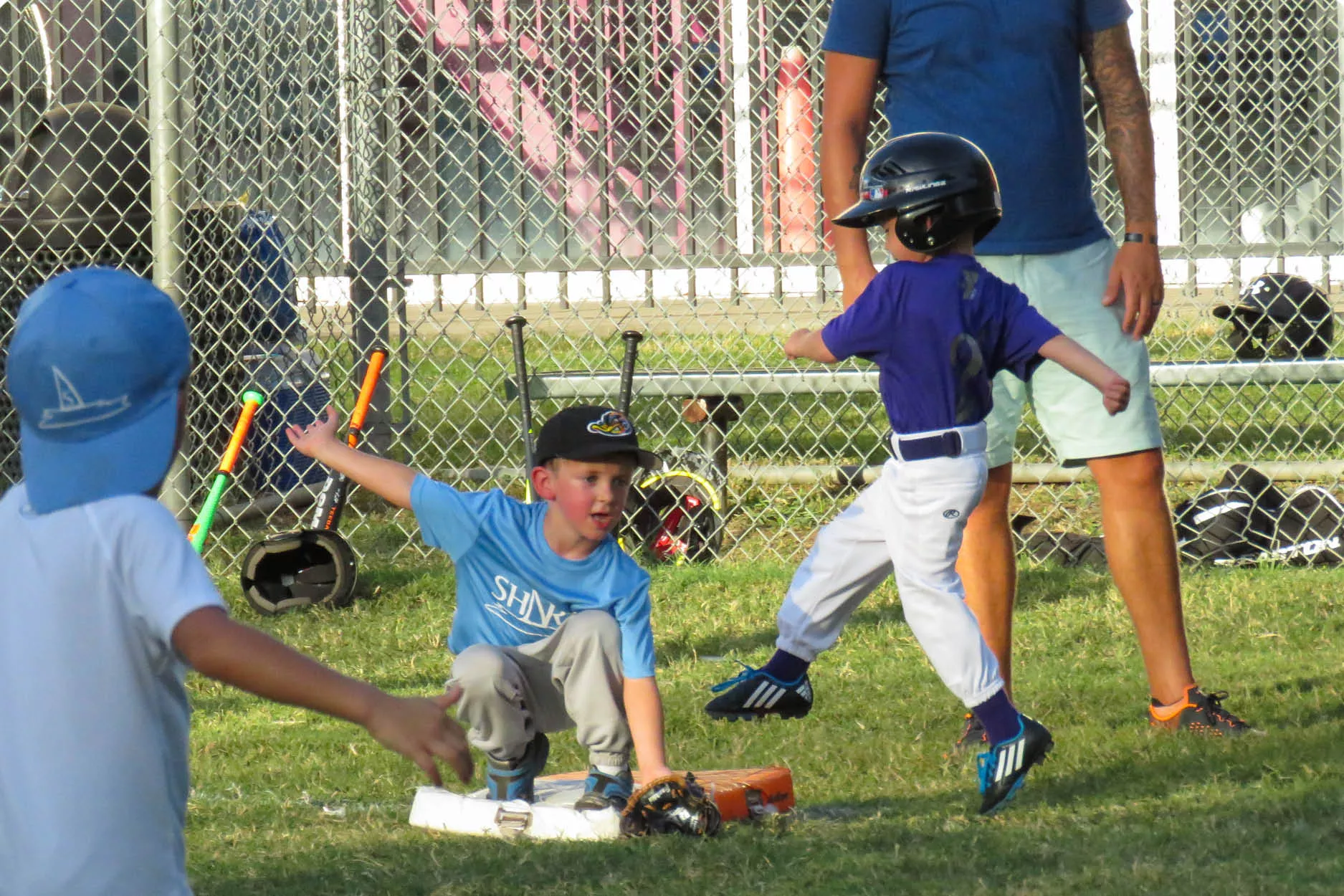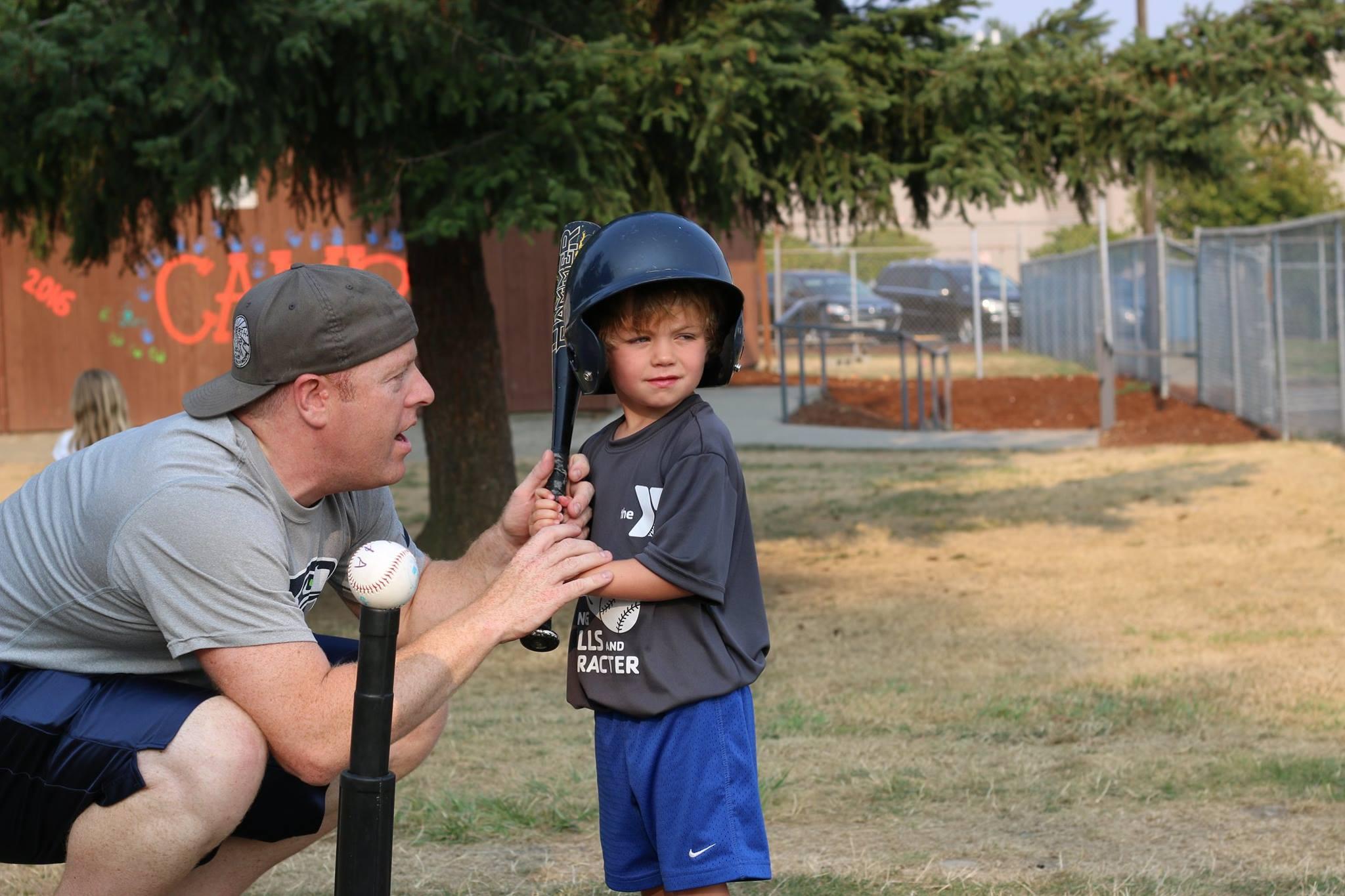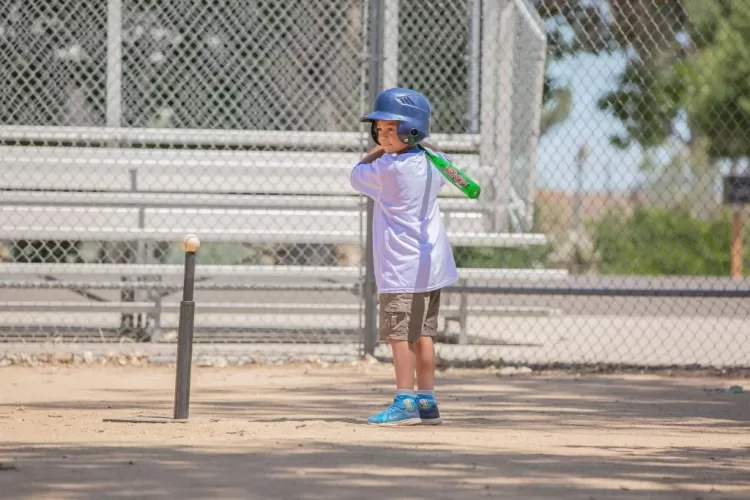As a long-time youth baseball coach and former player, I’m often asked by parents how long t-ball practices should run. As with most things involving young children, there is no one-size-fits-all answer. However, there are some general guidelines coaches should follow to ensure practices are productive, engaging, and fun for 4-6 year olds.
The ideal t-ball practice length is 60-75 minutes, 1-2 times per week.
Arrive Early and Start On Time
As the coach, it’s important to arrive at least 15 minutes early to set up equipment and prepare any practice activities. Kids (and parents) appreciate punctuality, so practices should start right on time. Tardiness eats into your limited practice window and can frustrate players.
Aim to gather players promptly at the scheduled start and get them warmed up right away. Spend 5-10 minutes on dynamic stretching and light activity to get their bodies and minds engaged. The earlier you start, the more time for skills work.
Breakdown of Recommended Practice Times
For a 60-75 minute t-ball practice, here is an ideal breakdown of activities:
- Warm up and stretching: 5-10 minutes
- Skill building stations: 30-40 minutes
- Game play: 15-20 minutes
- Wrap up, cool down: 5 minutes
This allows sufficient time at each young age for skill development, fun gameplay, and transitions between activities. Adjustments can be made based on your team’s needs.
Skill Building Stations
The bulk of practice time should be spent at focused skill building stations. For t-ball, these stations should cover:
- Throwing/catching
- Hitting
- Fielding ground balls
- Base running
Spend 6-10 minutes at each station. Keep the drills and activities simple and success-oriented, providing lots of encouragement, tips, and positive reinforcement.
Use engaging props like cones, hoops, and pools noodles to keep their attention. Provide frequent water breaks to keep kids hydrated.
Game Play
Every practice should end with 15-20 minutes of game play like short batting and base running games. This allows kids to have fun applying their skills in a low-pressure game environment.
Keep any game rules simple. Prioritize moving bodies, making contact with the ball, and learning base running basics over strict adherence to rules. Provide lots of praise for effort and good sportsmanship.
Wrap Up and Cool Down
Leave 5 minutes at the end of practice for water, a team cheer, wrap up huddle, and stretching cool down. Recap 1-2 skills learned that day. Answer any questions. Share a positive thought on each player.
Remind players of the next practice time. Thank them for their effort and send them off with high fives. This helps end each practice on an enthusiastic note!

Additional T-Ball Practice Tips
Here are some additional tips for productive t-ball practices:
- Keep parents engaged by inviting them to assist at skill stations. This also allows you to give more individualized attention.
- Bring an assistant coach or volunteer teen to help manage stations.
- Use music and silly chants to keep drills lively.
- Focus on one core skill per practice rather than overwhelming them with too many concepts.
- End on time or a few minutes early. It’s better to leave them wanting more than dragging out tired kids.
- Always have a plan B ready in case an activity goes shorter or longer than expected. Be flexible!
Engaging Young Kids from Start to Finish
The key to successful t-ball practices is keeping young kids constantly engaged in productive activities that build skills, passion, and confidence.
Well-run 60-75 minute practices allow ample time for skill-building, fun application in games, and recovery between activities. This duration also fits most kids’ attention span at this age.
Arrive early, start on time, keep everyone moving, make it fun, and end on a high note. Following this formula will lead to an enriching, positive t-ball experience kids will look forward to each week!
Proper Use of Assistant Coaches
As a t-ball head coach, one of your most valuable resources is assistant coaches. Having extra sets of hands and eyes to provide instruction, supervision, and encouragement serves your young players well.
Ideally, have 1-2 assistant coaches on staff. This allows you to split up into small groups at stations and provide more individualized attention.
When drafting parents or volunteers, look for responsible, patient individuals who will be engaged and add positivity. Avoid assistants who will be distracting or undermine your leadership.
Take time before each practice to discuss your plan with assistants and clearly define their roles. Assign assistants to lead specific skill stations to take that responsibility off your plate.
Empower assistants to use their own coaching style and rapport with kids but have them reinforce the core skills and techniques you’ve outlined as head coach. Check in with assistants periodically to see if they need any direction or help.
During practice, position yourself where you can observe the overall energy and flow between stations. Step in to assist where needed. Provide tactful feedback to assistants after practice on things that went well or could improve.
Keep assistants involved with team communication, scheduling, equipment management, and other duties. Thank them sincerely for their commitment. The energy good assistants bring is invaluable in creating a fun, nurturing environment for your t-ball squad.
Inclement Weather Contingency Plans
In youth sports, dealing with weather disruptions is inevitable. Rain, extreme heat/cold, poor air quality from fires, lightning storms, and other conditions may force practices indoors or to be cancelled.
As coach, you must be prepared with contingency plans to ensure safety and effective use of time. Here are some tips:
- Have an easily accessible indoor facility reserved as a backup. Schools, community centers, churches, and sports domes are good options.
- Keep parents updated on last minute location changes via email, text, or social media.
- Focus indoor practices on skills that transfer well without much space like throwing, catching, tee hitting.
- Have a plan B ready for each station in case you lose activity space. Be flexible!
- Shorten and simplify stations for indoor days to account for close quarters.
- Supplement limited indoor time with skill-building homework like practicing stance in a mirror.
- When necessary, err on the side of safety and cancel. Make up practices if possible.
- If missing multiple outdoor practices, add batting cage time or indoor scrimmages.
With preparation and adaptability, weather disruptions don’t have to mean lost skill development. Maximize indoor time and communicate changes proactively with parents so players don’t miss a beat!
Player Evaluation Methods
Assessing each player’s progress and areas for growth is key. Here are productive evaluation methods:
- Take notes on player performance during drills. Note strengths and weaknesses.
- Have assistants provide player feedback. Compare perspectives for a balanced overview.
- Film batting, throwing, and fielding drills for later review. Watch videos to evaluate form.
- Share positive, specific feedback directly to players throughout practices.
- Hold brief one-on-one check-ins on skills. Ask for their self-assessment.
- Discuss player development in coach meetings, but avoid comparisons.
- Craft training plans for individuals needing extra focus in fundamentals.
- Keep perspective on age and stage. Progress in t-ball looks like increased confidence and willingness to try.
- Recognize effort and positive team behaviors as much as baseball skills.
Purposeful evaluation allows targeted skill development and training adjustments to help each unique player maximize potential. Stay positive, focus on growth, and keep perspective on realistic expectations.
Special Accommodations and Adaptive Equipment
Baseball should be welcoming for all kids, including those with physical, sensory, or intellectual disabilities requiring accommodations.
As a coach, be proactive and communicate with parents to understand needs. Then make appropriate adaptations:
- Create modified expectations for specific skills. Adjust goals to ability.
- Allow alternate positions like tee hitting or assistive device use.
- Provide enhanced instruction through modeling, visual aids, and physical assistance.
- Modify field setups and rules to facilitate participation.
- Foster a team culture of inclusion, support, and encouragement.
- Check in with parents regularly on what’s working or needs adjustment.
With creativity and commitment to adjustments, kids requiring accommodations can thrive in t-ball alongside peers. Every player deserves to experience team camaraderie, skill achievement, and the pure fun of playing ball.

Effective Demonstration and Communication
As coach, properly demonstrating skills and communicating instructions in a way young players understand is critical. Here are some tips:
- Keep verbal instructions simple, concise, and descriptive like “Point your toe at the pitcher”.
- Demonstrate each skill yourself in proper form at full speed and slow motion.
- Break down complex skills into small steps. Have players model each step.
- Face players and demonstrate skills mirror-image so they can copy your motions.
- Use visual aids like hula hoops as props. Move through proper throwing motions in the hoop.
- Enlist a veteran player or assistant to model skills if you need to observe the group.
- Use cues related to their world like “swing your arms like helicopter blades”.
- Check frequently for understanding and have players explain skills back to you.
- Praise proper technique and immediately correct improper form to prevent bad habits.
With engaging demonstrations and clear, tailored communication, skills translate more quickly from coach instruction into player execution!
Batting Cage Incorporation
Once players progress from tees, adding periodic batting cage time can be highly beneficial by providing:
- A controlled setting to practice hitting pitched balls at game speeds
- Ability to dial in pitching machine to match hitting abilities
- Repetition for honing proper swing mechanics and timing
- Protection from weather disruptions
- Chance to observe stances and swings closely
- Opportunity to combine skills by adding base running
Ideally get 30-60 minutes of batting cage time every 2-3 weeks. Let each player bat through the order 2-3 times. This builds confidence hitting in game-like conditions.
Bring an assistant to help reset tees and feed the machine. Make sure helmets fit properly and bats/balls are suitable for their age. Add incentives like points for solid contact.
The batting cages are a hitting lab. Take advantage regularly to evaluate and develop the most critical of baseball skills!
Parent Involvement Best Practices
While extra help from parents at practice is great, limits are needed. Parents crowding the dugout area can distract and undermine coaching authority. Here are some involvement best practices:
- Establish clear parent volunteer roles like snack coordinator, equipment manager, carpool driver.
- Politely ask extra parents to give players space and not coach/comment during practice.
- Designate an area outside the immediate drill space for parents to observe without interfering.
- Suggest constructive ways for parents to be involved at home like playing catch.
- Hold occasional parent meetings to update on team progress and gather feedback.
- Stress importance of punctuality, positive cheering, and allowing coach instructions.
- Develop mutual trust through consistent player updates and welcoming input outside practice.
Reasonable involvement and open communication keeps parents feeling informed and engaged while allowing coaches to maintain focus on player instruction and development.
Tips for Making Drills Fun
Ensuring drills are fun and engaging enhances skills focus, active participation, and enjoyment for young players. Here are some tips:
- Incorporate friendly competition like races between bases.
- Add points/scoring systems to skills like throwing through targets.
- Use character names like calling grounders “hot potatoes”.
- Play lively music during activities.
- Vary locomotion between stations like skipping or galloping.
- Use relay, tag, or small sided games to reinforce skills.
- Time stations and cheer on teammates.
- devise team challenges like a set number of successful catches.
- Play quick games like throwing tic tac toe between reps.
- Use colorful equipment like neon balls and cones.
- Have players demonstrate skills to partners and provide praise.
Finding ways to add lively engagement to otherwise repetitive drills makes skill-building fun and keeps kids progressing happily!
Conclusion
As a youth baseball coach, few things are more rewarding than witnessing the incredible progress our little t-ball players make in just a few short weeks each season. Their eagerness to learn new skills, make new friends, and simply have fun playing ball can be infectious!
The key is structuring their limited practice time each week to keep them engaged, teach fundamentals, allow skill application, and foster their passion for the game. Be ready with a plan but flexible. Make it active, positive, and fun above all else.
Following the framework outlined above of 60-75 minute practices 1-2 times per week will help ensure kids get the most out of this early baseball experience. Arrive early, maximize skill stations, incorporate games, and end on time. Parents will appreciate your preparedness and kids will leave counting down the days till the next practice!
As a final thought, remember that t-ball is likely these young ones’ first foray into organized sports. Our instruction and encouragement can leave a lasting mark on their athletic journeys. So be patient, be present, nurture their joy, and let their imaginations run wild on the diamond. After all, as fun as baseball is now, just imagine the possibilities ahead!
Frequently Asked Questions
How often should t-ball teams practice?
Once or twice a week is ideal for t-ball. Any more than that can lead to burnout or conflict with other activities at this young age.
How long are t-ball games?
T-ball games typically last 2-3 innings or 60-90 minutes. This duration maintains engagement and interest.
Should practices be longer as the season progresses?
It’s better to keep consistent 60-75 minute practice lengths throughout the season. Extending practices as the season goes on risks boredom and frustration.
What if kids get tired or lose focus during practice?
Build in frequent water and recovery breaks. Shift to a fun, active game if you see attention waning at a skill station. Keep practices fast-paced and energetic to hold their interest.
Should t-ball teams practice indoors or outdoors?
Outdoors is ideal whenever weather permits for easy set up and plenty of space to move. Have an indoor back-up location for weather issues.
What is the coach-to-player ratio for t-ball practices?
Ideally 1 coach for every 6-8 players. Enlist assistant coaches and parent volunteers as needed to provide adequate supervision and instruction.
How strictly should coaches enforce rules with t-ball players?
Focus on teaching fundamentals and sportsmanship rather than strict rule enforcement. Learning through play and fun should be the priority at this age.




Pingback: First Practice Success: Tips for 4-Year-Olds' T-Ball Practice - Baseball Boom